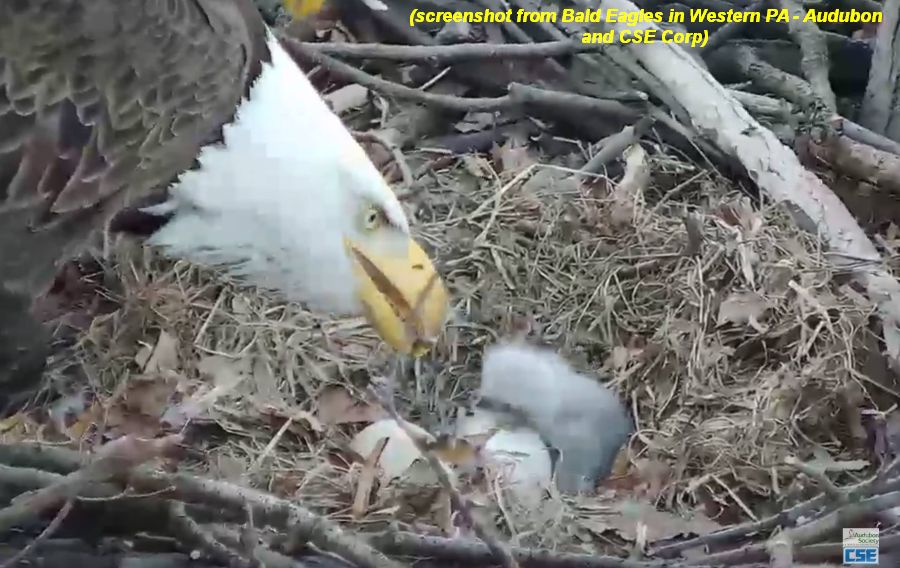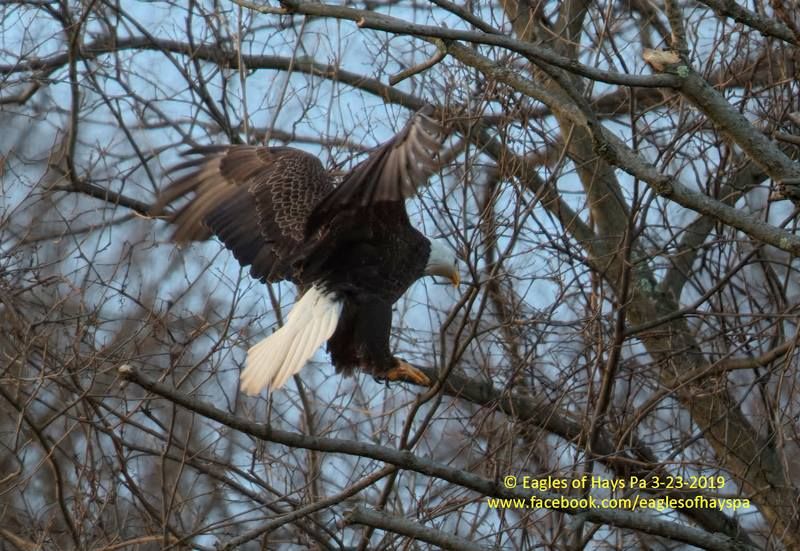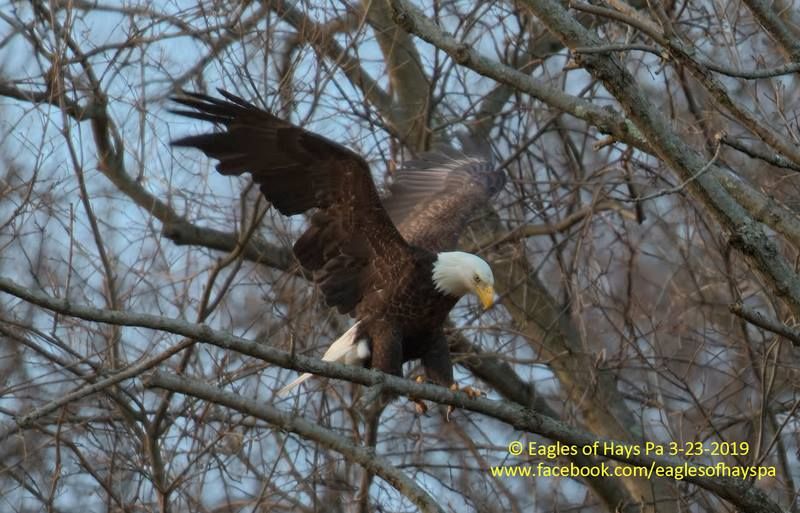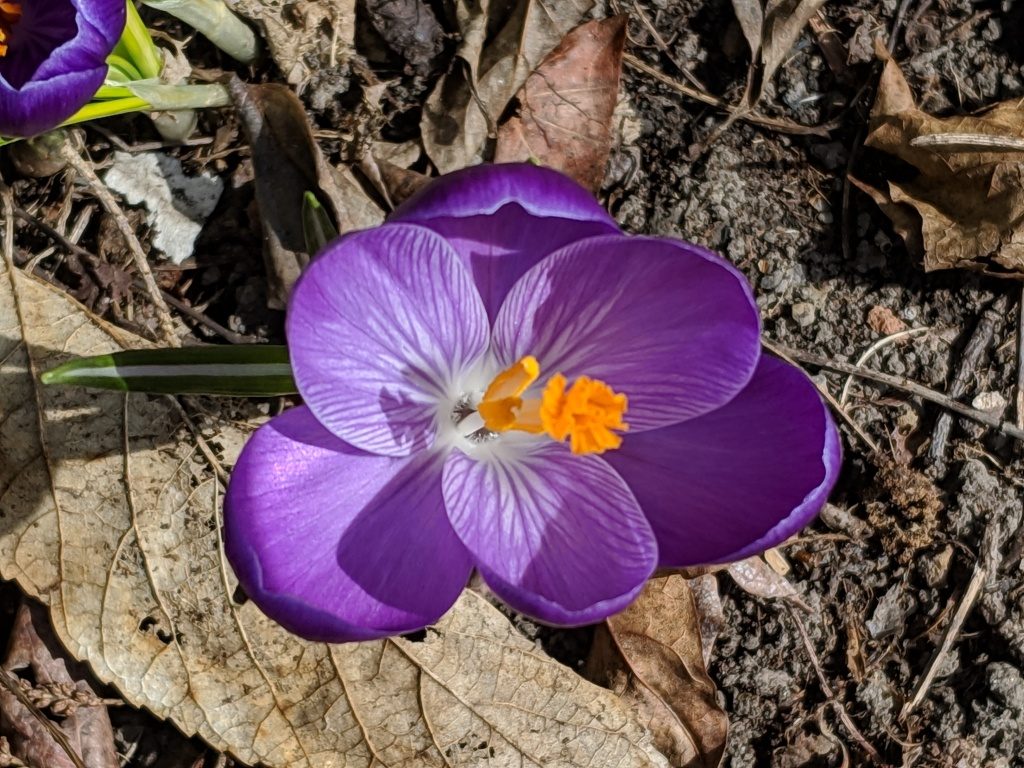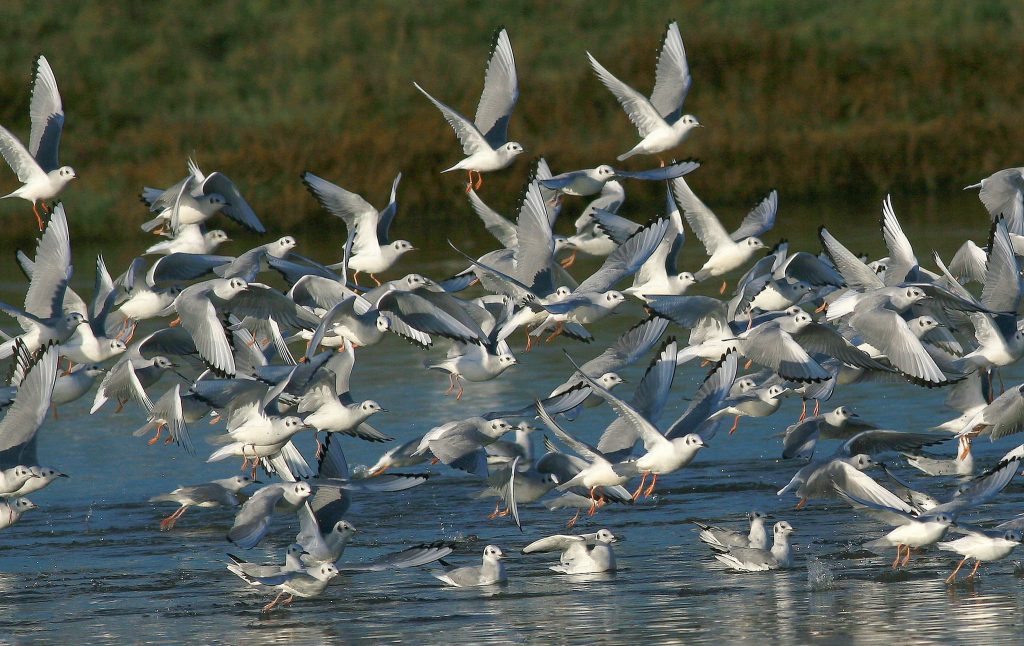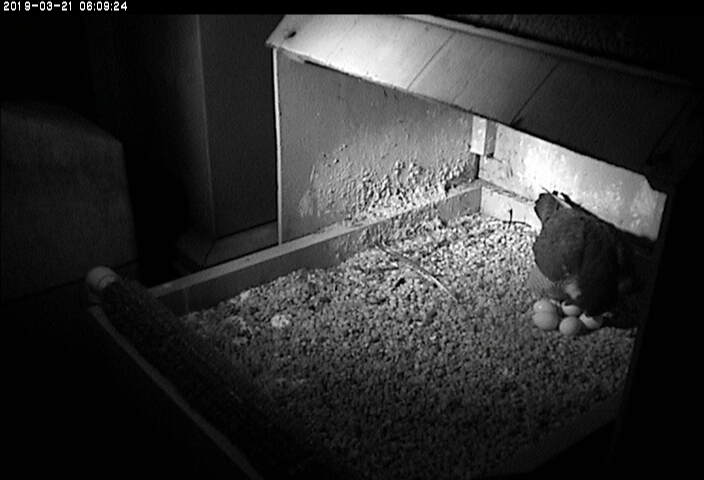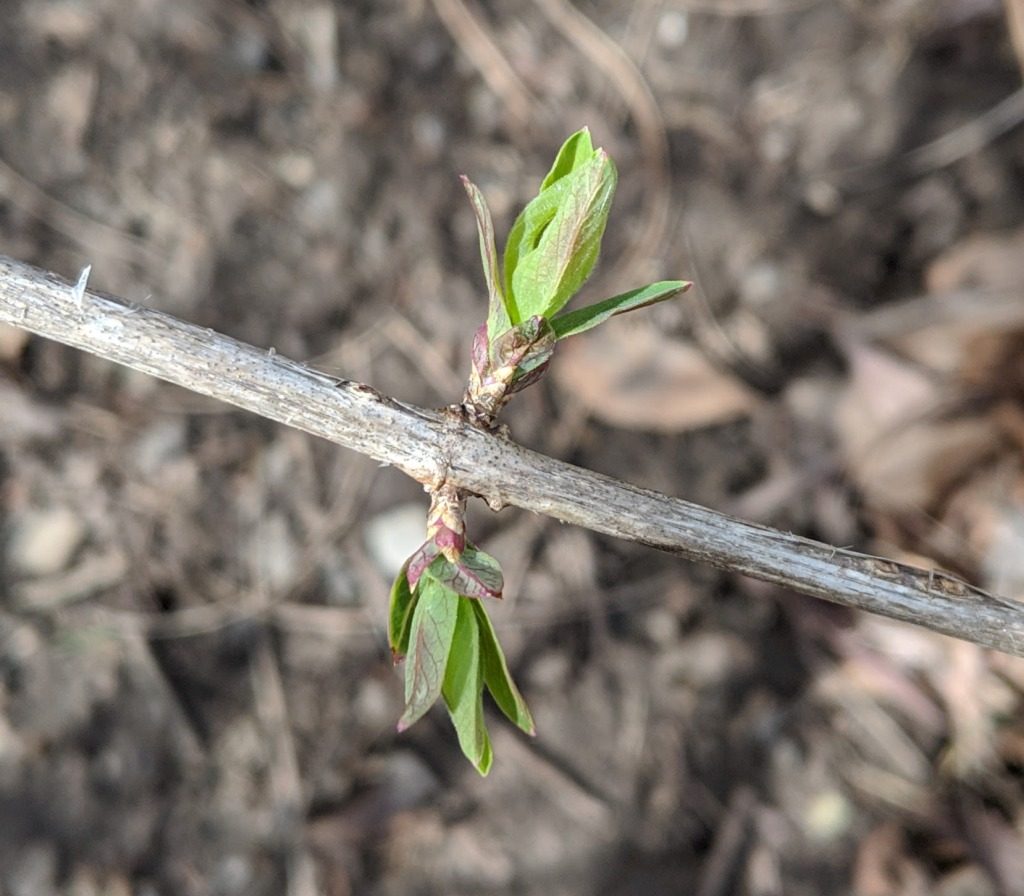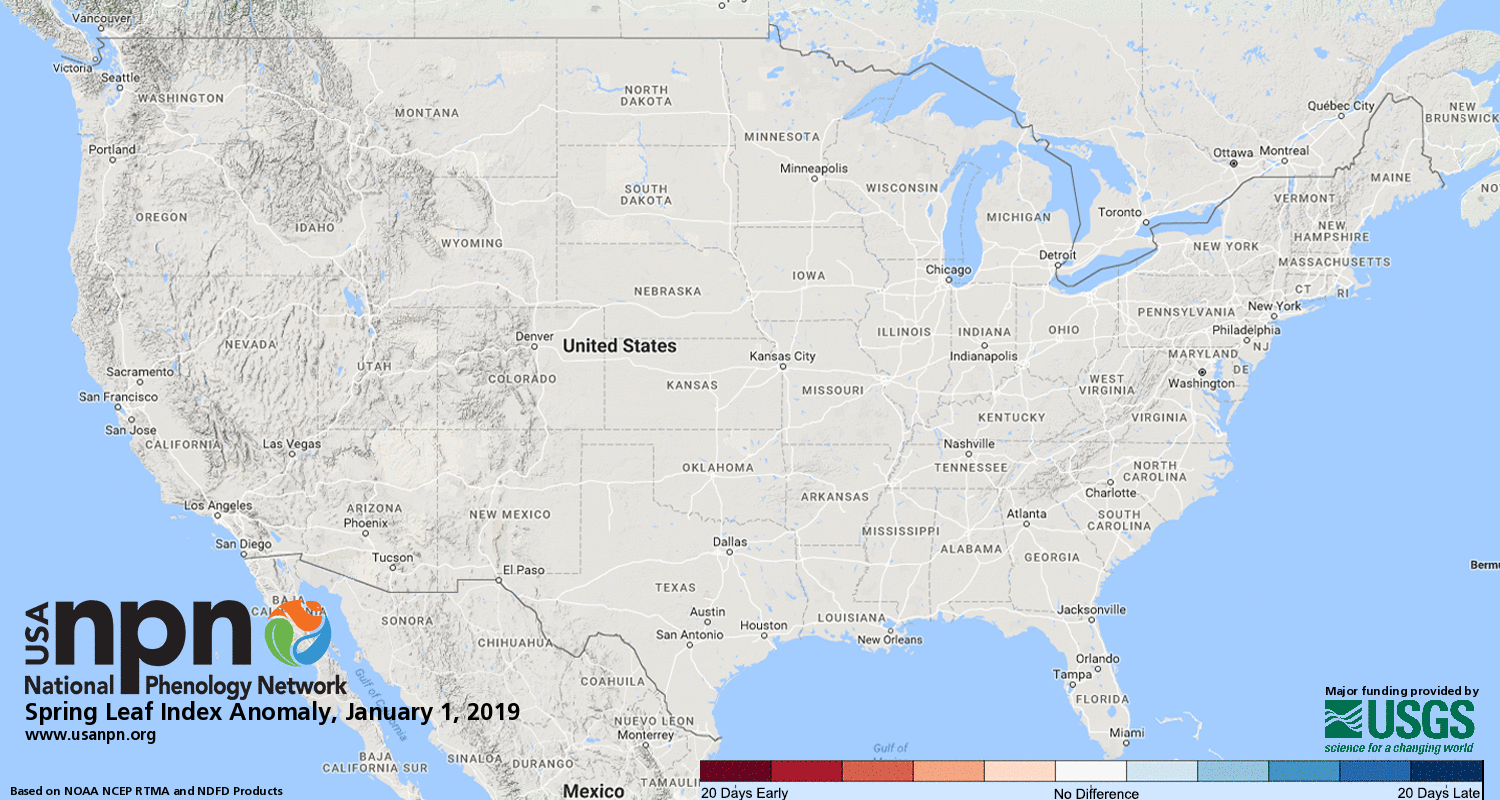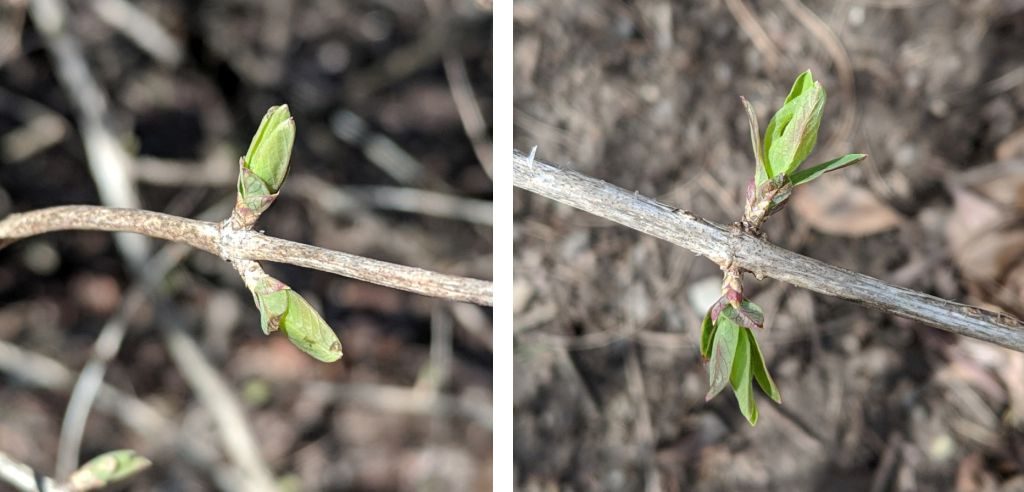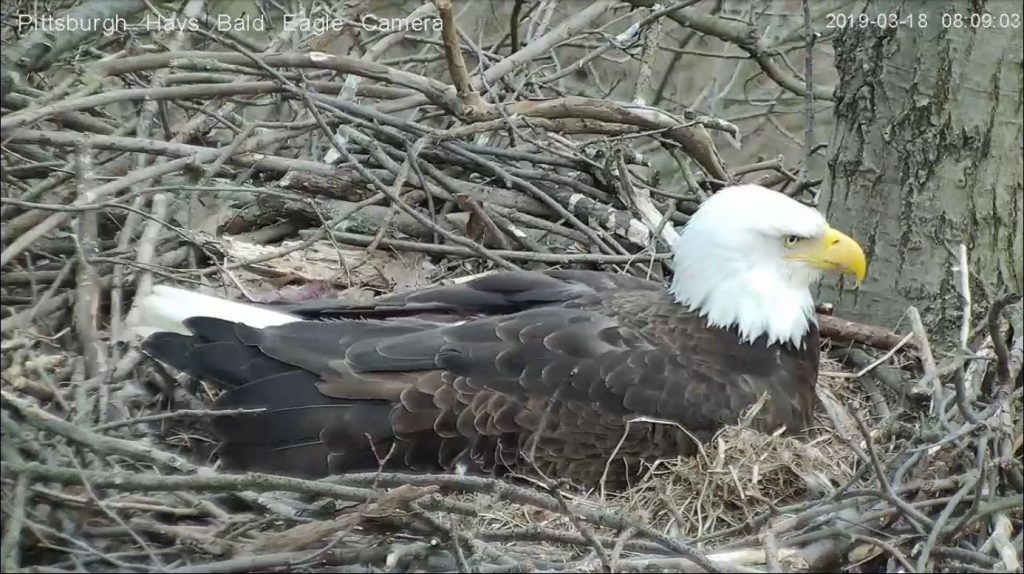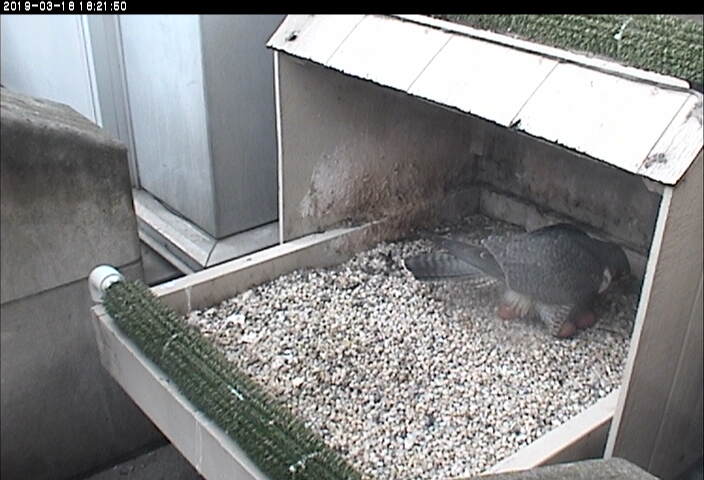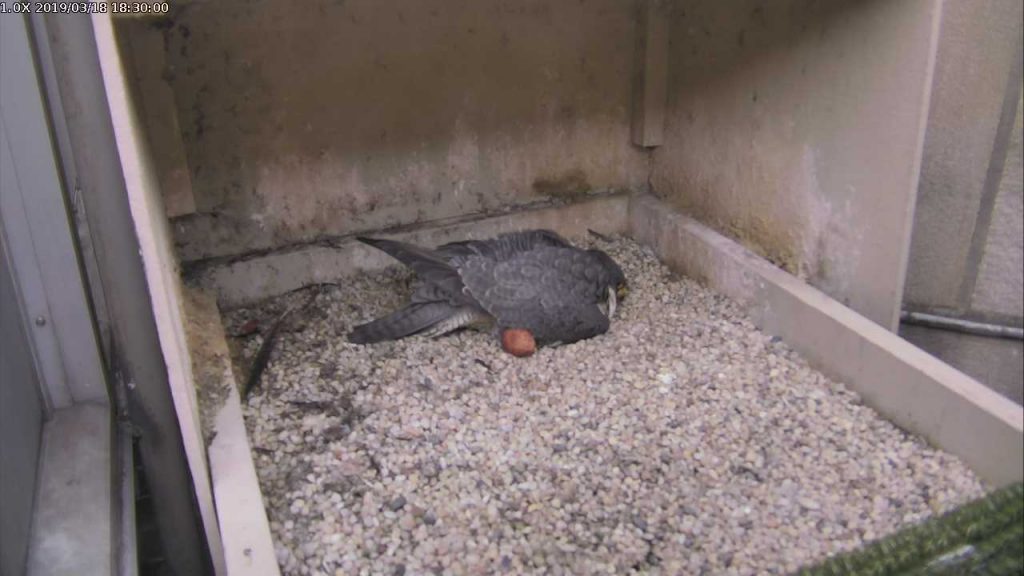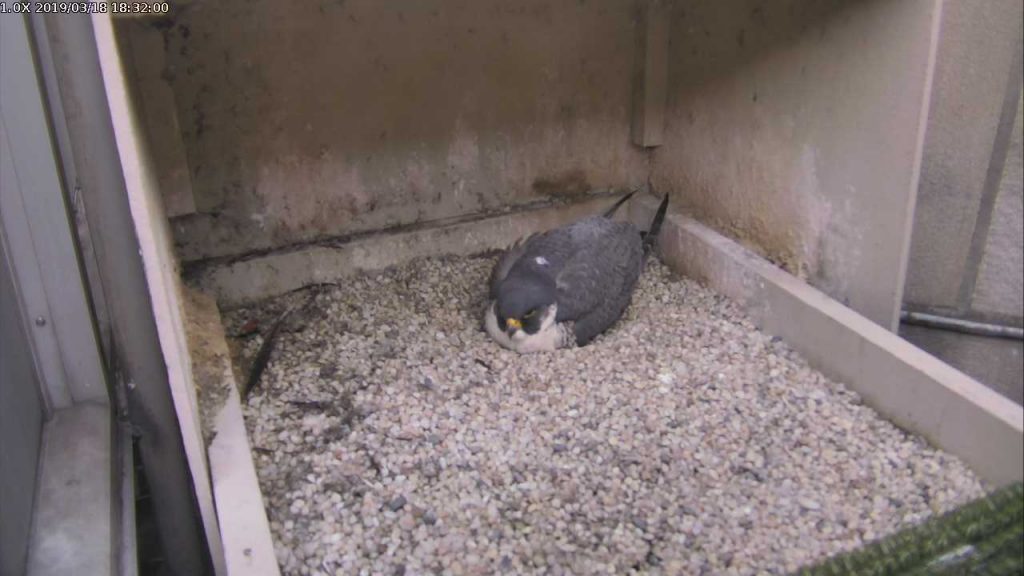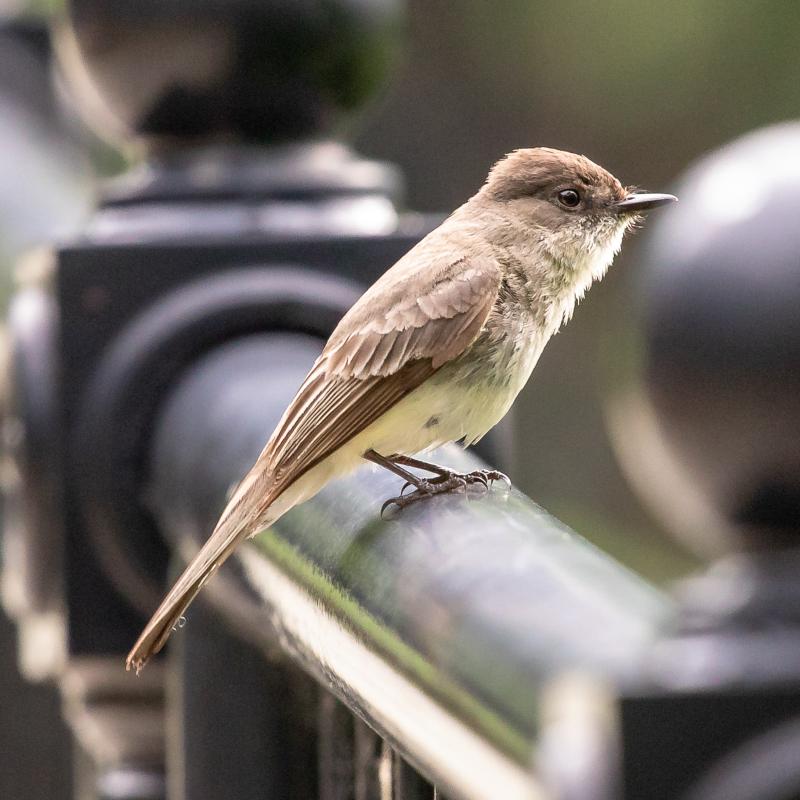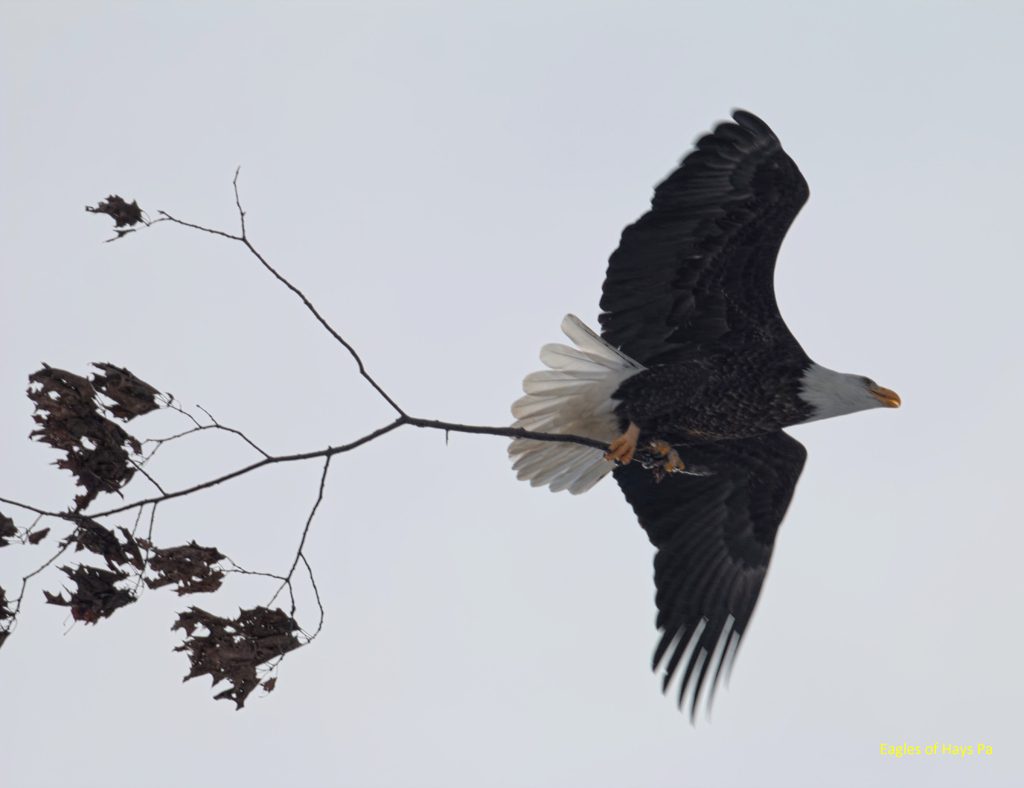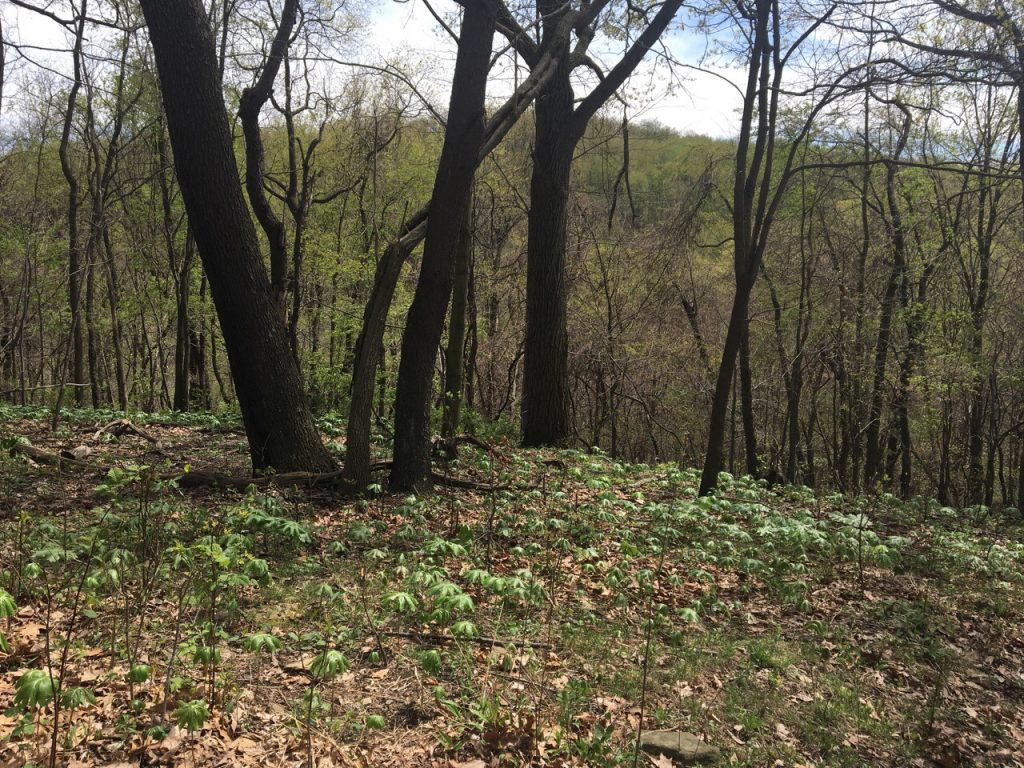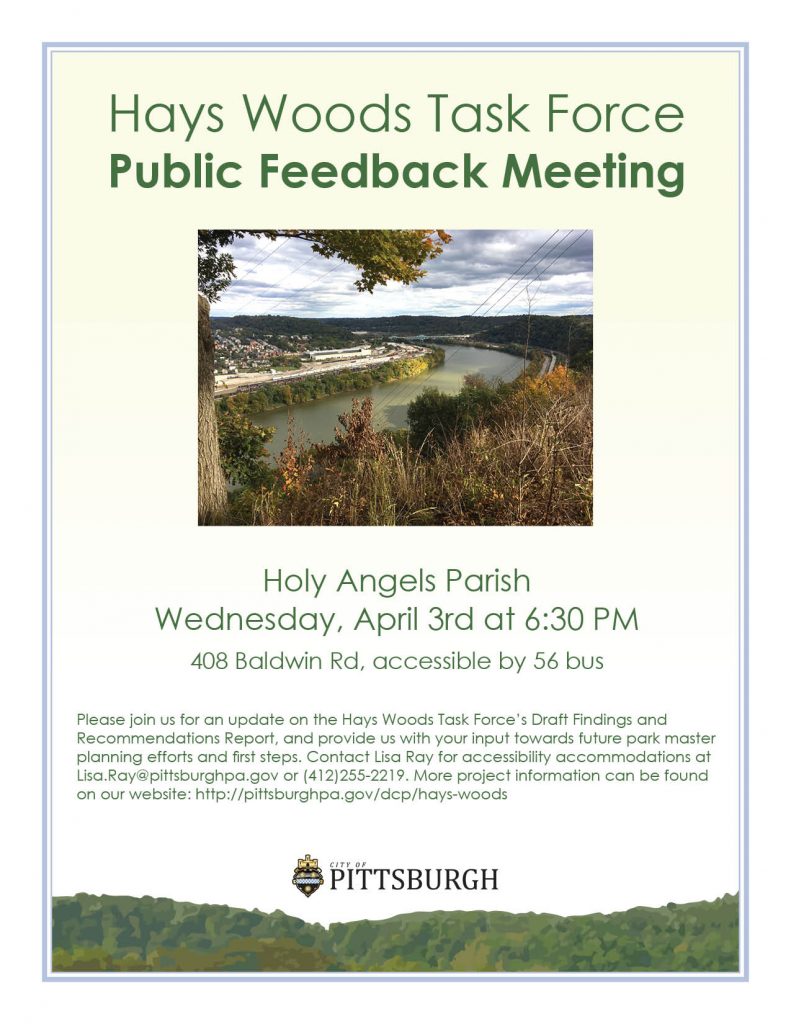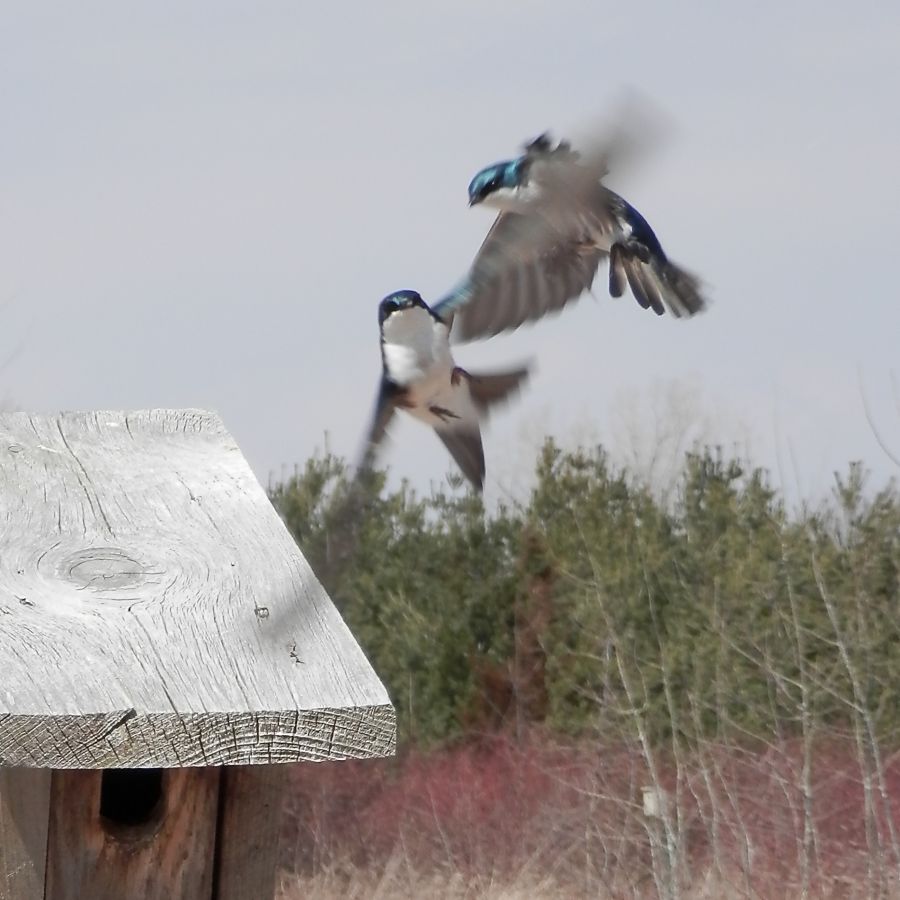
You might not see any tree swallows in Pittsburgh yet, but there are flocks in the north at Custards, Geneva Marsh and the Linesville Fish Hatchery.
Last Tuesday March 19 Patience Fisher and I were amazed by the millions of midges in the air at Custards. There were so many that they coated my car and attracted hundreds of tree swallows that wheeled over the marsh.
Tree swallows (Tachycineta bicolor) are short distance migrants who spend the winter as close to us as coastal North Carolina. The males tend to migrate first and arrive on the breeding grounds to claim territory and fight over nest sites, including bluebird boxes. When the females arrive they pair up quickly and place a little nesting material in their chosen nest site. The pair won’t nest for a few weeks but they like to stake their claim early.
Keep an eye out for tree swallows in the days and weeks ahead … and hope for warm weather so they have enough insects to eat.
Tree swallows are coming soon.
(photo from Wikimedia Commons; click on the caption to see the original)
